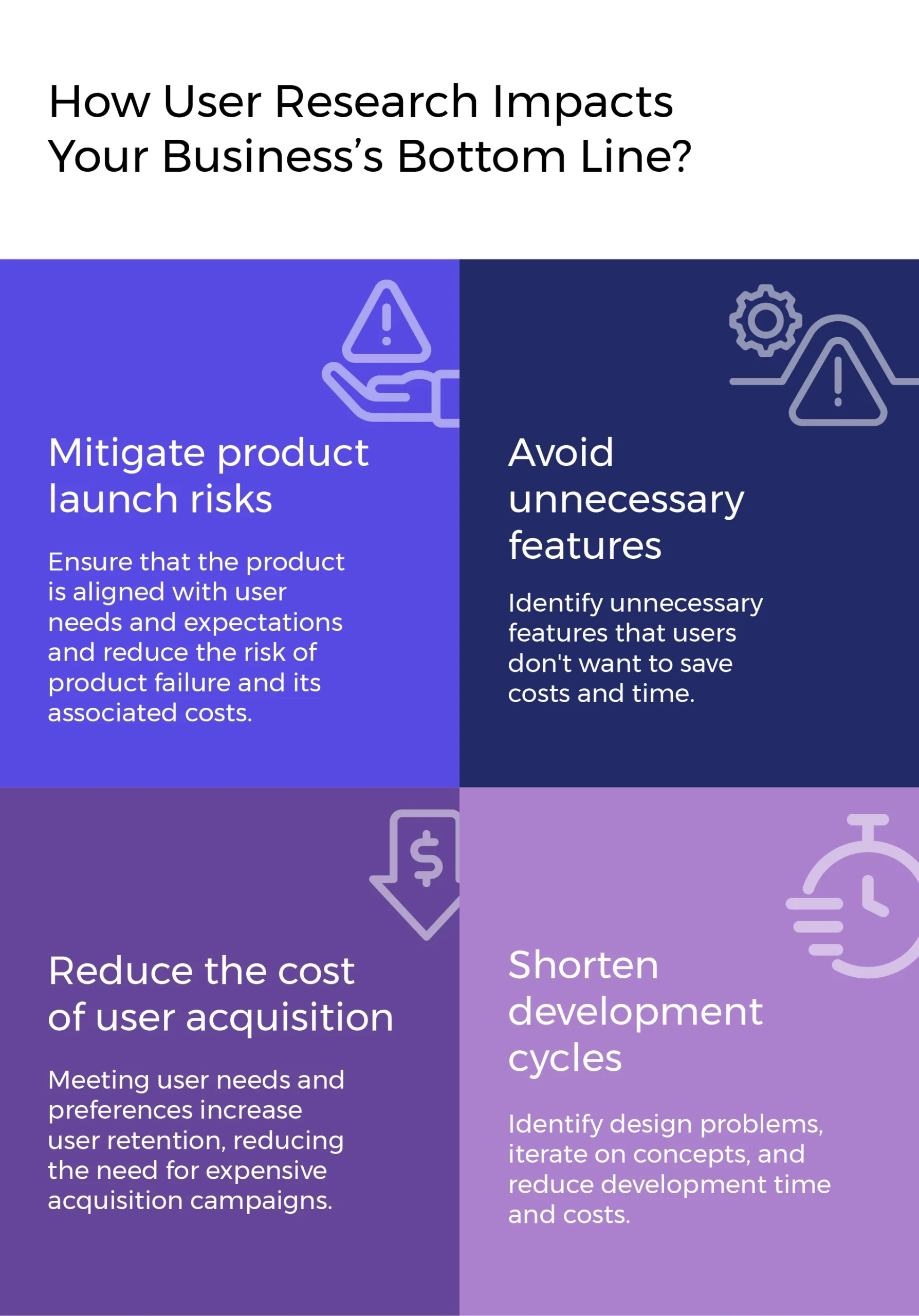Product leaders know how crucial user research is to uncover users’ needs, behaviors, and motivations so that they can build products users love (and use!).
It’s no secret that talking to users is a crucial part of product management. I mean, how else will you know if your product is meeting their needs?
But, despite this obvious fact, many product leaders still find themselves in the midst of product design nightmares.
“… most product leaders do not have a process or strategy in place to speak to customers regularly.”
Simon Knight, PM, Idera
Conducting research is not a one-time event that happens at the beginning of a project, but a continuous process that should be integrated throughout the entire product development cycle.
Without continuous research, product leaders may not have a clear understanding of their users’ evolving needs and behaviors, leading to subpar product designs that fail to meet user expectations. Besides, there are numerous benefits in terms of time, resource, and cost optimization.
Why Invest in User Research Continuously
Investing resources and time in user research are vital, be it a fresh project, or a product upgrade. It may seem like an extra expense, but it’s a smart investment that can save you money in the long run, especially when done strategically.
Let’s look at some direct benefits of how user research impacts your business’s bottom line.

Let’s look at some direct benefits of how user research impacts your business’s bottom line.
Mitigating product launch risks
By conducting continuous user research, you can ensure that the product is aligned with user needs and expectations, reducing the risk of product failure.
Example: Prior to launching, Slack created a shared channel of 100 users representing dozens of organizations around the world. The channel let them hear unfiltered input quickly and see where the first ideas weren’t quite right, and refine the design to improve the experience. Source
Avoiding unnecessary features
Don’t let unnecessary features drain your resources and time. Investing in features that users don’t want can be costly and wasteful. By conducting thorough user research, you can identify and avoid such features, saving you valuable development costs.
Example: At Airbnb, individual team members make small bets on new features and measure their impact. Successful bets are then invested in, leading to the development of major new features. This structure promotes taking productive risks and encourages innovation. Source
Reducing the cost of user acquisition
By meeting user needs and preferences, you increase the likelihood of attracting and retaining users, reducing the need for costly acquisition campaigns.
Example: Dropbox conducted user research and found that users were more likely to refer others if they received a reward they could use themselves. So they increased the number of referrals. This led to a reduction in their customer acquisition costs. Source
Shortening development cycles
User research can help you quickly identify problems and iterate on design concepts, reducing the time it takes to bring a product to market. This can save costs by reducing development time and allowing you to get your product to market faster.
Example: User research helped Intuit identify small business pain points, leading to quick development and integration of features that addressed the pain points. This reduced development costs, improved product integration, and increased customer satisfaction. Source
5 Tips to Conduct User Research That Truly Matters
Here are five tips to help you conduct user research that truly matters.
Prioritize Strategic Research Over Reactionary Research
It is often seen that stakeholders tend to focus on providing business, operational, or technical requirements in the product design brief, whereas user needs are often overlooked or given little consideration.
To ensure the design process results in a product that truly meets the needs of users, you must gather and prioritize the right information. It all starts with asking the right questions.
Difference between Research Questions and Interview Questions
Strategic research is when the team deliberately derives a list of items that should be researched. This is essentially based on various sources, including tracked UX debt, user issues, designs related to top user tasks, or even new designs.
This approach allows sufficient time for recruiting participants, planning, conducting, analyzing, and addressing user insights. It also provides the opportunity to change the design direction or create prototypes based on research findings.
Reactionary research, on the other hand, occurs when a prototype or feature has already been created or coded, and someone requests for it to be researched. This happens more frequently than you can imagine.
This approach can be challenging and unhealthy for development teams, as it may lead to issues such as:
- Late identification of user issues
- Inadequate planning
- Insufficient time to include the right participants
- Prototypes not fitting research questions
- The need for expensive external resources if in-house researchers are overloaded.
And if the prototype goes unresearched, it may result in subpar designs being released, which can harm the overall success of the project.
Continuous Research For Modern-day Product Teams
Amazon deploys 136k times in a day! (that’s 1.6 deployments every second). Even Airbnb deploys 125,000+ times daily.
But, why would companies do that?
Nowadays, digital products and services are so complex that their maintenance has become continuous…shifting and changing like a living organism.
Companies like Amazon and Airbnb deliver continuously in tiny iterations, and research must also evolve a continuous mindset.
You need to keep iterating based on user research constantly (not as much as Amazon, though.) That’s the only way to keep your product connected to the customer. To practice continuous user research, you must:
- Analyze trends over time
- Conduct quarterly reviews
- Decide where to focus future product design efforts
Understand why you win, and why you lose
While it’s important to identify the product’s unique features and competitive advantages through user feedback, understanding the product’s weaknesses is equally significant.
C Todd, VP of product at MachineMetrics in one of his talks explains that product leaders make bad product decisions due to a combination of ego and imperfect data.
“We [product leaders] love our ideas so much that we want to see them come to life. It’s not a bad thing, but product teams often hang onto the emotion of an idea that they overcome the reality of whether it might be successful.”
Spending time accessing your win-and-lose situations can help you identify where the opportunities lie, ask the right questions, and narrow your focus on what to address, Todd suggests.
For B2B products, building strong relationships with go-to-market teams and conducting win-loss interviews can be particularly impactful.
These interviews can provide valuable insights into why certain deals were lost and help identify gaps in the product, areas where improvement is most critical, and competitive insights.
Set The Context: Ask The Right Questions
It is often seen that stakeholders tend to focus on providing business, operational, or technical requirements in the product design brief, whereas user needs are given little consideration.
To ensure the design process results in a product that truly meets the needs of users, you must gather and prioritize the right information. It all starts with asking the right questions and making sure that you’re being specific about the context.
Difference between Research Questions and Interview Questions
It’s crucial to differentiate between two types of inquiries:
- Research Questions: What do you aim to discover during your research to make more informed decisions based on evidence?
- Interview Questions: What you will ask the individuals you are interviewing to gather information relevant to your research questions.
Check out how we simplified the Medicare application process by asking the right questions in user interviews, resulting in an accessible system for the elderly.
Aim for Precision
Findings that lack precision only end up confusing the product teams and lead them to make assumptions. And that is exactly what they shouldn’t be doing. For instance, here are 2 inputs to the question, ‘How did the users find the navigation?’ –
- “The users found the navigation tough…”
- “The users left the registration process mid-way…”
This kind of feedback sheds little to no light on the actual problem.
Therefore, researchers must frame their questions in a manner that elicits detailed responses. Here are 2 instances –
- “Why was the navigation tough?” – “Because the back button was not easy to spot on the interface.”
- “At what point did the users generally abandon the registration?” – “The drop-down list of state codes was malfunctioning, therefore I could not finish entering my address.”
Answers to these questions can help designers understand the problem areas specifically.
Identifying specifics like the exact point in the design, UI, or flow which caused the problem can help build richer solutions.
As A Final Reminder…
User research is essential to creating a successful product that meets user needs, stands out from competitors, and reduces the risk of failure.
Understanding the needs and behaviors of your target audience through user research can help you focus on solving the right problems during the design process. By investing time and resources in user research upfront, you can create a design that truly meets the needs of your target audience, reducing the likelihood of costly design changes later on.










